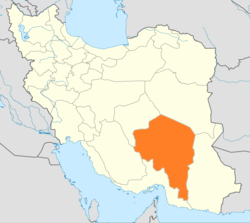Muslim conquest of Kerman
| ||||||
Background

At the time of the first Arab raids into Kerman during ʿOmar’s caliphate, Kerman was governed by a marzbān whose name is not recorded. There may have been some penetration of nomadic Arabs into Kerman in pre-Islamic times, if the report that Sasanian Šāpur II Ḏu’l-Aktāf settled Arab tribemen in Ahvaz, Tawwaj, and Kerman is accurate. The first actual invasion was started when Abu Musa Ashaari, the governor of Basra, sent Rabiʿ b. Ziād against Kerman. He conquered Sirjān and made a peace treaty with the people of Bam, while, at the same time the governor of Bahrain, Uthman bin Abi’l-ʿĀṣ Ṯaqafi, mounted another attack and killed the marzbān of Kerman on the island Abarkāvān (present-day Qešm) in the Persian Gulf. Shortly afterwards, in 29/649-50, the last Sasanian, Yazdegerd III, fled through Kerman, pursued by an Arab army that perished in the snows of the mountains, allowing the king to reach Khorasan, where, however, he was eventually killed.[1]
The conquest
During the time of caliph Uthman, the Rashidun sent two contingents consisting of Abdullah ibn Aamir and Suhail to conquer Kerman. Fierce fighting occurred against the Koch o Baloch which resulted in the death of the Sassanid governor of Kerman. Afterward, the caliphate army occupied the main cities, including Sirjan, Bam, Jiruft, and as far as Hormuz.[2]
References
- ↑ Encyclopaedia Iranica, (Balāḏori, pp. 315–16, 391; Ṭabari, I, p. 2,863; tr., XV, p. 69)
- ↑ Baloch and Balochistan, Naseer Dashti
External links
THE ARAB CONQUEST, B. A. Litvinsky, A. H. Jalilov and A. I. Kolesnikov